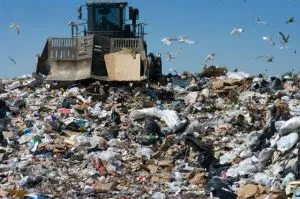Each year, Americans throw away a staggering amount of food. According to statistics compiled by the USDA, between 30 and 40 percent of our food supply – roughly 133 billion pounds of food – goes straight to the garbage can and festers in landfills.
This practice is both threatening the environment and is a slap in the face to the 49 million people in this country struggling with hunger.
The US Environmental Protection Agency (EPA) estimates that 21 percent of the total composition of landfill waste is made up of discarded food. Some of this is food that has been left in the fridge or pantry too long and allowed to rot, and some is perfectly good food from dinner leftovers, or prepared restaurant items that remain at the end of a service. Both of these methods of waste are entirely preventable.
Not only are 49 million Americans going hungry, according to the United Nations, about 802 million people around the world do not have enough to eat. Due to this fact, our habit of throwing out food due to convenience and lack of forethought is inexcusable. Additionally, food waste in landfills creates methane gas emissions, which are more damaging to the ozone layer than carbon dioxide.
Recognizing this as a serious issue, the USDA and the EPA spearheaded the US Food Waste Challenge in 2013, encouraging both households and businesses to reduce their waste.
One of the initiatives suggested is creating community composting programs, which more and more cities are embracing. Another recommendation is for restaurants to donate leftovers to shelters and food banks instead of throwing them away.
Some restaurants are taking significant steps towards addressing food waste. Justin Vraney, the owner of Sandwich-Me-In restaurant in Lakeview, Illinois, a part of Chicago, is a leading player in a ‘zero waste’ initiative dedicated to finding ways to keep food out of the garbage can. Vraney explains, “the idea is either composting it, recycling it properly, or reusing it. That way it is diverted from the landfill.”
- There are many steps we can take at home to reduce how much food we throw out, including the following simple suggestions:
- Buy only what you need. Make a list before going to the grocery store, so you do not buy excess food that will rot in the back of your fridge.
- Create a compost pile. If you do not have space in your home or yard to do so, talk to your local community center to see if there is a community-wide composting program.
- Make leftovers into lunches, or freeze what you will not eat the next day.
- If you find you have cooked more than you and your family can eat, and there is no room in your freezer, bring a meal or two to a neighbor – they will be sure to appreciate it!
- Save your fruit and veggie peels, tops and rinds. These can be used in homemade soup and sauce bases; simply strain them out before serving, and then add to your compost pile.
- If you eat meat, save the bones and cartilage; they can be simmered into delicious and healthy stocks and broths .
- Don’t throw away your used coffee grounds – check out these upcycling options.
- Tea bags and used tea leaves also have an array of secondary uses .

-The Alternative Daily
Sources:
http://news.medill.northwestern.edu/chicago/news.aspx?id=231069
http://rt.com/usa/us-food-waste-usda-618
http://www.usda.gov/wps/portal/usda/usdahome?contentid=2013/06/0112.xml
